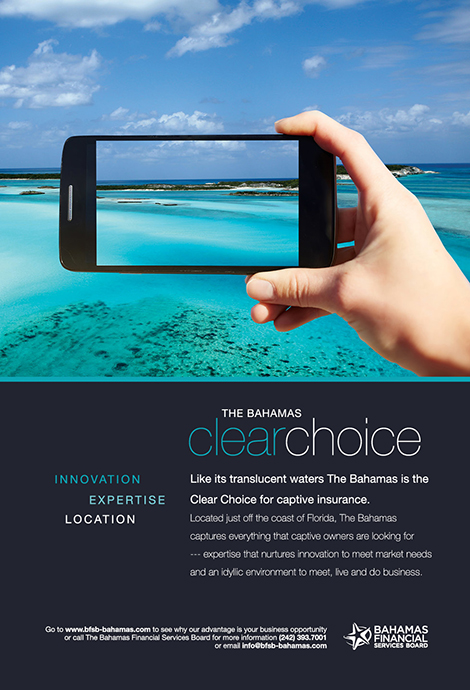As Utah posts high growth out of a pandemic year, Barney Dixon looks at what 2023 has in store for the captive domicile
The US captive insurance market has continued to generate profits and surplus gains, while outperforming its commercial market peers.
According to an AM Best Special Report, “US Captive Insurance: Stepping In Amid Capacity and Pricing Challenges,” which was produced last year, captives reported a pretax operating income of $1 billion in 2021.
Dan Teclaw, associate director at AM Best, says that the captive segment’s “inherent flexibility and control in managing risk drives profitability and retains earnings, while creating value for its policyholders and stakeholders, regardless of market conditions.”
While recent events (including the COVID-19 pandemic) have tempered captive formations over the past three years, looking forward, these conditions may prove a net positive for captive insurance as companies begin to learn more about captives.
Looking at a captive insurance domicile such as Utah, it is clear that captive insurance will continue to grow in 2023, with companies looking to insure against various risks that have come to the fore in the past few years.
As the second biggest captive insurance domicile in the US, Utah is no stranger to these trends.
Boasting 57 new captives in 2022, bringing its total number of licensed risk bearing entities to 419, Utah has emerged from the pandemic with one foot forward, flaunting its benefits, such as its flat annual fee in lieu of state premium taxes and its cheap cost of doing business, to companies looking to explore alternative and flexible solutions.
According to numbers from the Captive Division of the Utah Insurance Department, the state had a net growth of 33 risk-bearing entities, licensing 57 new captives and closing 24.
This growth straight out of the pandemic is an indicator of things to come and Travis Wegkamp, director of captive insurance at the Utah Insurance Department, says the numbers show that Utah “continues to be an attractive and vibrant domicile for those exploring their captive insurance options.”
He adds: “Utah continues to be rated as one of the best states to do business in the nation, and we pride ourselves on our reasonable approach to captive legislation.”
A good year for captives
Last year, the world saw the beginning of the end of the pandemic. In Utah, the pandemic has affected and will continue to affect aspects of captive insurance. Wegkamp notes that the pandemic has “helped the business community learn about, and see the value of having, a captive insurance company.”
According to Wegkamp, the pandemic was also a driver in “seeing increased premium volume.” He expects this trend to continue post-pandemic, as traditional markets remain hard, “but more so because once you begin to more fully utilise your captive, you begin to better realise the overall positive aspects and benefits of it.”
Overall, 2022 was a good year for Utah. With the aforementioned net growth of 33 captives, Wegkamp expects the state to beat its record for captive gross written premiums in 2022. In 2021, Utah broke its own record, hitting over US$2.1 billion in captive gross written premiums.
“When the numbers come in for 2022, I’m expecting to see a new record set again,” he adds.
Legislation
In recent years, Utah has seen a number of updates to its captive legislation. These changes have helped the domicile to continue its growth and bolster its attractiveness as a domicile. For example, in 2020 Utah saw an amendment which allowed captives to reinsure third-party risk with prior approval of the commissioner. Many captives have since specifically formed captives in the state as a result of this bill. The state has also reduced the total minimum capital required for a sponsored programme from US$1 million to $500,000, and also allows captives to insure punitive damages for a parent or affiliate, so long as the award doesn’t arise out of a criminal act.
The Beehive State
Looking forward to 2023, Utah continues to see coverages in workers’ comp and medical stop-loss programmes. Wekgamp, however, notes cybersecurity as a “high-growth area.”
This is no doubt in part due to the recent spate of ransomware and cyber attacks against companies over the past few years. While cyber insurance has mostly been used by technology companies, financial institutions and retail businesses, it is becoming a more frequent area of concern for companies of all shapes and sizes looking to manage risk.
Wegkamp also says there has been a lot of interest and discussion around ESG type coverages, though he concedes that these discussions haven’t fully materialised into actual coverages being written.
However, he expects this to increase “as the industry continues to respond and flesh out the details.”
In terms of challenges, Wegkamp says that making companies aware that captive insurance is an option is a priority.
“There continues to be a large percentage of the business community that’s never heard of captive insurance,” he argues, “many of these are from smaller companies that may consider the pretty standard US$250,000 minimum capital an insurmountable barrier to entry.”
Wegkamp says the state is looking to break down these barriers and “give these companies a chance at entering and realising the benefits of owning their own captive.”
This includes the state lowering the US$250,000 minimum capital requirement to 50 per cent of the company’s total annual risk exposure, but no lower than $50,000.
Wegkamp also argues that continued scrutiny by the IRS “and the tax courts inability to understand captive insurance and its fundamental difference to the traditional market” remains a challenge for captive insurance going into 2023. Largely, Wegkamp believes that captives will continue at the same pace and to “expect more of the same.”
“I haven’t seen or heard of anything new to suggest captives won’t continue to serve a vital function for those seeking to better manage and finance their risks.”





